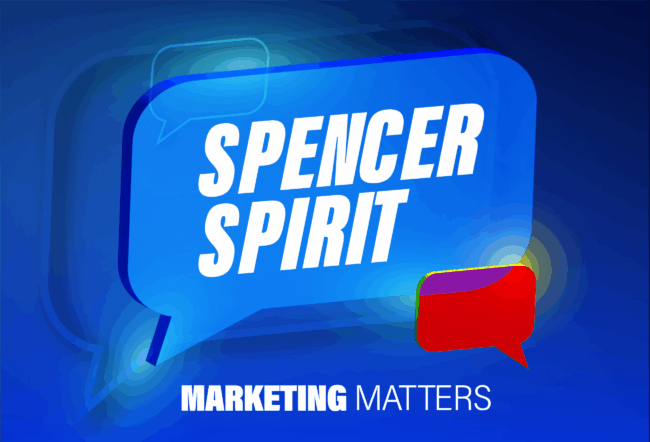Can bad publicity be good for sales? Is it more important for hedge fund managers to be lucky or skilled when it comes to offering new products? What is the best pricing structure to align optimal profits with consumers’ perception of value? Wharton professors Jonah Berger, Evan Rawley and Raghuram Iyengar, respectively, offer answers to these questions, and identify the implications for the business world, in recent research papers.
When Bad Reviews Reap Rewards
Is the famous truism “any press is good press” actually true? A study by Wharton marketing professor Jonah Berger says that, in some cases, it is.
In “Positive Effects of Negative Publicity: When Negative Reviews Increase Sales” (published in Marketing Science), Berger, in collaboration with Alan T. Sorensen and Scott J. Rasmussen of Stanford University, investigates how book sales are affected by poor reviews.
They draw the surprising conclusion that negative publicity actually has a positive effect on sales of lesser-known or unknown products by bringing them into the public’s awareness. This effect is magnified as time passes after the review. The volume of books, movies and albums that are released year-round ends up flooding consumers with information, Berger says. Customers “may not remember that something is negative. You may read a negative review today, and then a couple of weeks go by, and you might remember that you heard something about the book, but not remember exactly what you heard.” In those cases, the poor review becomes “free advertising,” boosting awareness with few repercussions.
The researchers first studied the release and sales of more than 200 New York Times-reviewed books. While well-known authors benefited from positive reviews and were hurt by negative reviews, less prominent authors enjoyed a 45% sales increase thanks to the plug from the Times, even when receiving poor reviews.
Next, the team ran an experiment to isolate the “awareness” and “time lapse” variables. A group of 250 participants were asked to read a mix of positive and negative reviews of a well-known John Grisham book and a fictitious book invented by the researchers. After reading the reviews, half of the participants completed “filler tasks” lasting 10 to 15 minutes. The two groups were then asked how likely they were to purchase the two books. The researchers found that even a 10- to 15-minute time lapse was sufficient enough to make the “filler task” group more receptive than their peers to the negatively reviewed “low-awareness” book.
A third phase of the research had a group of 137 participants complete online surveys where they were asked to rate their awareness of, and purchase likelihood for, a set of books, including the Grisham novel and the fictitious book. In between, they were asked to read a review of one of the two target books. “There are two components to purchase — awareness and evaluation,” the researchers write. “Evaluation drives purchase; that’s what we found. But for the unknown products, reading a review makes them more aware of the product regardless.”
According to Berger, similar effects have often been observed anecdotally through the sudden rise to stardom of B-list celebrities, as well as the stunning sales Michael Jackson generated even when he was in the news for negative behavior. But the researchers say this is the first academic study to prove and quantify such an effect. Previous studies could not isolate the effect or generate a sufficient control group, largely due to their use of movies as a study category. Only around 700 movies are produced annually, while new books number in the thousands, allowing any given book to have less product awareness than a film, the researchers note.
Berger and his colleagues even suggest that newcomers to the movie and book scene might want to “fan the flames” of negative publicity, knowing that the costs in the short term will be offset by long-term awareness gains. “This does not mean all negative information will have positive effects, and it is still important to understand consumer sentiment,” they write. “That said, not all negative publicity or word-of-mouth should be quieted. Consumers often attempt to discount direct advertising, but because negative publicity does not seem like a direct product appeal, it may slip under the radar and thus have a more pronounced effect.”
The Interplay between Ability and Good Fortune
Is it more important for hedge fund managers to be lucky or skilled when expanding to offer new products?
How about both?
In “Skill, Luck and the Multiproduct Firm: Evidence from Hedge Funds,” Wharton management professor Evan Rawley and Rui J.P. de Figueiredo, Jr., of the University of California Berkeley, explore how strong returns from existing hedge funds drive launches of new products. They observe that, while many funds post strong returns at some point in time, the “lucky” funds separate themselves from the “skilled” funds based on their diversification choices immediately afterwards.
The fee structure of hedge funds drives them to launch new funds; more expansive is always better when working off a percentage of gross returns without “clawbacks.” But fund managers understand that launching new funds can reveal their weaknesses as money managers. So while the authors show that most managers wait until they generate strong returns to launch a new fund, investors have good reason not to worry that a fund contacting them for money is basing the pitch on a single fluke period. The poor manager knows he or she cannot sustain those strong returns, and that opening a new fund presents a tremendous risk to his or her reputation, Rawley notes. Meanwhile, the skilled manager knows that he or she can benefit from diversification into a new fund and keep that reputation intact.
To demonstrate this effect, Rawley and de Figueiredo followed a select sample of 1,353 funds from 1994 to 2006. While 676 of these funds remained “focused,” the remainder launched a new fund. The study finds that the new funds boasted returns of six basis points higher per month per unit of risk compared to focused funds; the higher returns suggest superior fund management.
But that does not necessarily mean that only the weaker funds chose to stay focused. “There are some good firms that want to remain focused, and there are some bad, lucky firms that end up diversifying,” Rawley says, meaning that a lack of diversification might not be sufficient grounds to reject investing in a hedge fund. Specific factors, like the existing fund’s clients and the cost of launching a new fund, may prevent “skilled” funds from branching out.
In addition, there are some limitations to applying this theory outside of the hedge fund industry, according to Rawley. Hedge fund managers usually have their own wealth in the fund, making them averse to the short-term versus long-term tradeoffs that industrial managers might make. Hedge funds must also go to capital markets to fund expansions, while companies in the “real economy” might fund expansions with money from their own balance sheets. But Rawley suggests that the study may help other researchers or industry analysts to better understand the role of luck and skill in other business contexts. “We show that both of these effects are important. You can’t just talk about one in isolation.”
Aligning Pricing with Value
When Virgin Mobile first introduced its cell phones in the United States, the company had to make a key pricing decision: Would it offer phones to customers on the same terms as its competitors, charging monthly and per-minute fees, or would the carrier go a different route and charge only for the minutes its customers used? In “The Impact of Tariff Structure on Customer Retention, Usage and Profitability of Access Services,” Wharton marketing professor Raghuram Iyengar and co-authors Kamel Jedidi of Columbia University, Skander Essegaier of Koc University in Turkey and Peter J. Danaher of the Melbourne Business School in Australia investigate how a peculiar psychological trait helps answer this type of pricing structure question.
Traditional economics hails an initial access fee plus a per-use fee price structure, or “two part tariff” (TPT), as maximizing profits for a firm. “This result relies on the assumption that … the demand curve is the same under both PPU [pay per unit plans featuring only per-use fees and no access fee] and TPT pricing structures,” Iyengar says. Recent work in psychology, however, shows that consumer satisfaction is closely related to the fees they pay versus the benefits they receive.
“The price structure itself can influence a consumer’s perception of value and consumption,” according to Iyengar.
To find evidence for such influence, Iyengar’s research draws on a field experiment involving customers using a new landline/mobile telecommunications service. Users were randomly assigned to three independent groups and observed for 13 months. Two of these groups had TPT pricing plans, while the third had PPU pricing. Customers from each group could drop their service at any time, but did not know of the other groups’ existence.
After observing the consumers’ behavior and modeling it, the researchers found that, once they accounted for the “income effect” of reduced customer wealth following the initial monthly access fee, a TPT plan led to a 10.5% decline in retention rates and a 38.7% decline in yearly usage above and beyond what standard economics would suggest. They label their finding as the “access fee effect.”
In spite of the higher customer churn and lower usage, they found that TPT is still the profit-maximizing pricing structure for the firm. However, the researchers note, the firm would over-charge customers for the access fee and under-charge them for the per-minute price if it ignored the access fee effect. In terms of profitability, the failure to account for this effect leads to an 11% reduction in firm profit.
Two part tariff pricing structures are exceptionally common throughout the economy; everyone from Apple to AT&T to a local tennis club uses them. Recognizing and incorporating consumer preferences into pricing structures could allow these businesses to substantially increase their retention rates, usage and profitability, Iyengar notes. Innovative pricing structures like “three part tariffs” –where consumers are given a set amount of free uses with each initial access fee — more strongly link fees to benefits and therefore drive key business statistic and bottom line growth, he says.



